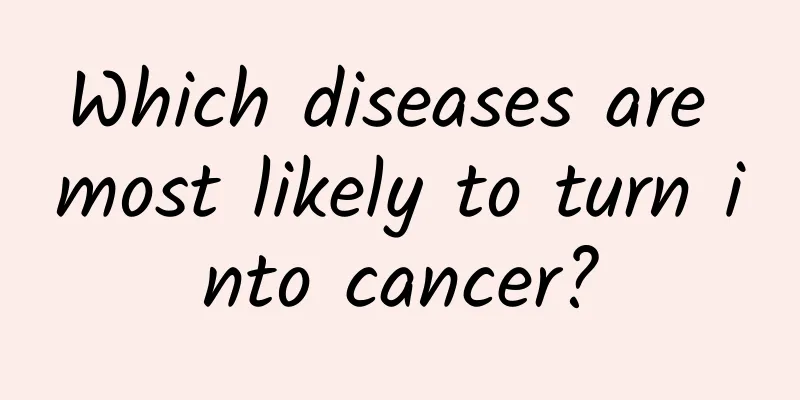What are the treatments for diabetes?

|
Diabetes is a metabolic disease caused by insufficient secretion or impaired action of insulin, which is mainly manifested as high blood sugar. With the change of lifestyle and the aging of the population, the incidence of diabetes has increased year by year, becoming a global health problem. So, what are the treatments for diabetes? This article will introduce you to drug treatment, lifestyle adjustment, insulin treatment and other aspects. Drug treatment 1. Oral hypoglycemic drugs Sulfonylureas, biguanides, α-glucosidase inhibitors, thiazolidinediones, etc. are commonly used in the treatment of diabetes. Sulfonylureas mainly lower blood sugar by stimulating the release of insulin from pancreatic β cells. This type of drug is suitable for patients with type 2 diabetes who have insufficient insulin secretion. However, the risk of hypoglycemia should be noted when using sulfonylureas, especially in the elderly and patients with liver and kidney dysfunction. Biguanides mainly lower blood sugar by reducing the production of glucose in the liver and increasing the utilization of glucose by peripheral tissues. This drug is especially suitable for patients with obesity and obvious insulin resistance. However, biguanides sometimes cause gastrointestinal discomfort, such as nausea, vomiting, and diarrhea. α-glucosidase inhibitors mainly lower blood sugar by inhibiting α-glucosidase in the brush border of the small intestinal mucosa and delaying the absorption of carbohydrates. This drug is particularly suitable for patients with elevated blood sugar after meals. However, it should be noted that α-glucosidase inhibitors may cause gastrointestinal reactions, such as bloating and diarrhea. Thiazolidinediones are a class of insulin sensitizers that mainly lower blood sugar by improving insulin resistance. These drugs are effective in patients with obesity and insulin resistance. However, thiazolidinediones may cause side effects such as weight gain and edema. 2. GLP-1 receptor agonists GLP-1 receptor agonists are a class of drugs that lower blood sugar by activating the glucagon-like peptide-1 (GLP-1) receptor. GLP-1 is an incretin secreted by intestinal L cells, which has multiple effects such as improving insulin sensitivity, promoting insulin secretion and inhibiting glucagon secretion. These effects together promote the decrease of blood sugar levels, thereby achieving effective treatment of diabetes. First, GLP-1 receptor agonists lower blood sugar by improving insulin sensitivity. Insulin is a hypoglycemic hormone secreted by pancreatic β cells, which can bind to insulin receptors on target cell membranes to promote glucose uptake and utilization. GLP-1 receptor agonists can increase the number and affinity of insulin receptors and improve the binding efficiency of insulin to receptors, thereby enhancing the hypoglycemic effect of insulin. Secondly, GLP-1 receptor agonists can also promote insulin secretion. When blood sugar levels rise, intestinal L cells will secrete more GLP-1. After GLP-1 binds to the GLP-1 receptors on pancreatic β cells, it can stimulate pancreatic β cells to secrete more insulin, thereby lowering blood sugar. This effect is particularly important in patients with diabetes because their pancreatic beta cell function is often impaired, resulting in insufficient insulin secretion. In addition, GLP-1 receptor agonists can inhibit glucagon secretion. Glucagon is a blood sugar-raising hormone secreted by pancreatic alpha cells that can bind to glucagon receptors, promote liver glycogenolysis and gluconeogenesis, and lead to increased blood sugar. GLP-1 receptor agonists help lower blood sugar by inhibiting the secretion of glucagon and reducing its effect on increasing blood sugar. Insulin therapy Diabetes is mainly divided into type 1 diabetes and type 2 diabetes. For both types of diabetes patients, insulin therapy is often indispensable. Insulin is the main hormone for the body to lower blood sugar. For diabetic patients, insulin injection can effectively help control blood sugar levels and prevent various complications caused by high blood sugar. First of all, let's understand why patients with type 1 diabetes need insulin therapy. The pancreas of patients with type 1 diabetes cannot produce enough insulin, resulting in the body's inability to effectively regulate blood sugar. In this case, the supplementation of exogenous insulin is particularly important. Through regular insulin injections, patients with type 1 diabetes can keep their blood sugar within the normal range, thereby avoiding the occurrence of serious complications such as diabetic ketoacidosis. For some patients with type 2 diabetes, although their pancreas can still produce a certain amount of insulin, as the disease progresses, insulin secretion will gradually decrease, and the body's sensitivity to insulin will also decrease. In this case, insulin injection can help patients better control blood sugar, alleviate symptoms, and reduce the risk of complications such as cardiovascular disease and retinopathy. However, insulin therapy is not a simple "one shot and it's done". Patients need to develop a personalized treatment plan under the guidance of a doctor based on their condition, blood sugar level and lifestyle. The injection dose, injection time, injection site, etc. need to be precisely controlled to ensure the safety and effectiveness of the treatment. At the same time, patients also need to monitor their blood sugar regularly and adjust the treatment plan in time to cope with changes in their condition. Lifestyle Adjustments Lifestyle adjustment is the basis of diabetes treatment. Here are some suggestions: First, diet adjustment. Follow the principle of low-sugar, low-fat, high-fiber diet, reduce the intake of high-calorie, high-fat, high-sugar foods, and increase the intake of vegetables, fruits, and whole grains. Second, increase exercise. Proper exercise helps lower blood sugar, lose weight, and improve insulin resistance. It is recommended to do at least 150 minutes of moderate-intensity aerobic exercise per week, such as brisk walking, swimming, cycling, etc. Third, quit smoking and limit alcohol. Smoking and excessive drinking have adverse effects on the health of diabetic patients and should be avoided as much as possible. Author: Zhang Luyan Dingxing County Hospital |
<<: How to be alert to the occurrence of testicular torsion
>>: About montmorillonite powder, after reading this article, I have gained more useful knowledge
Recommend
What are the dangers of eating dried eggs frequently? What are dried eggs made of?
Dried eggs are vacuum packed individually, which ...
What are the taboos of uterine cold symptoms
The symptoms of uterine cold are varied, includin...
If you have diabetes, you must pay attention to this type of eye disease!
Middle-aged and elderly diabetic patients are als...
What are the reasons for not getting pregnant after IUD removal?
Children are the future of the family, because wi...
Conservative treatment of uterine fibroids
More and more friends are making rapid progress i...
Is it normal to have abdominal pain after angiography?
Hysterosalpingography is a common method used to ...
What causes ectopic pregnancy?
Ectopic pregnancy is a very common phenomenon. As...
Baking soda for washing vulva
Health is a beautiful galaxy that gives people ho...
What should I do if my breasts hurt after feeding?
Breastfeeding is an essential skill for many expe...
Withdrawal bleeding 20 days ectopic pregnancy
If you do not take proper contraceptive measures ...
Top 10 health supplements that women must take
Women should learn to take care of themselves. Th...
What to do if you feel nauseous during pregnancy
Pregnancy will bring various pregnancy reactions,...
Gynecological diseases manifest differently before and after marriage
1. Vulvar itching Married women suffer from itchi...
Severe cervical erosion pregnancy rate
Many female patients worry that once their cervic...









